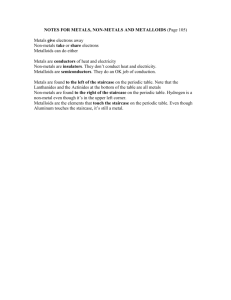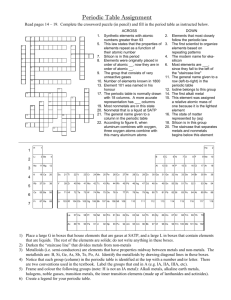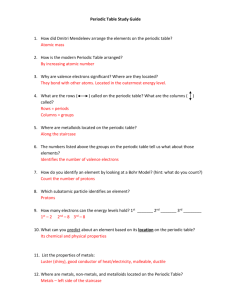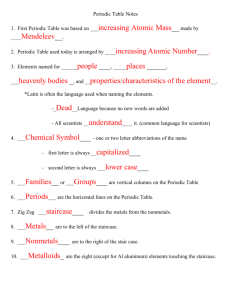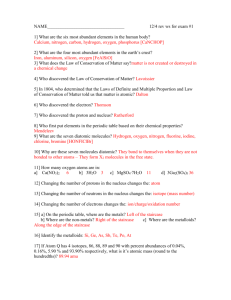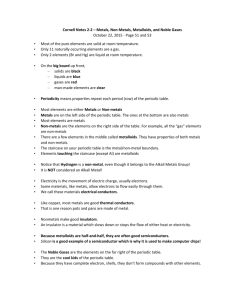Periodic Table PPt
advertisement
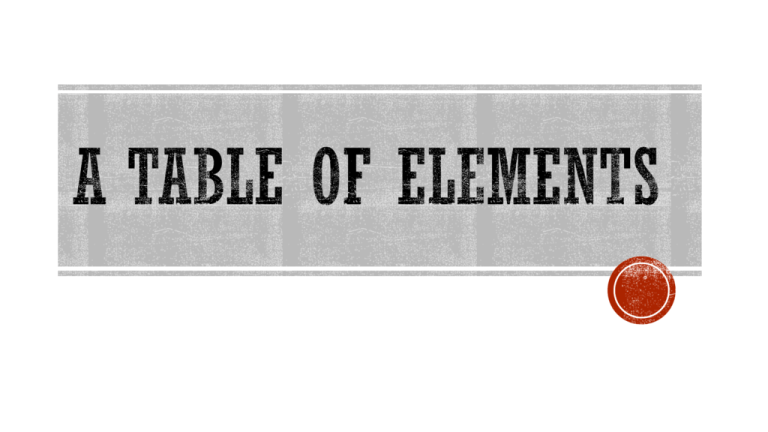
I will be able to identify the different parts of the periodic table. I will be able to the properties of metals, non-metals and metalloids. The periodic table is a table of elements € ELEMENT: a pure substance that cannot be broken down € ELEMENTS Are the building blocks of all things in the world Are made of tiny particles called ATOMS Are pure substances (only one type of atom) ATOMS cannot be broken down A collection of all known elements on earth. It is a table that lists the properties of each element including Atomic Number Atomic Weight Atomic Name Element Symbol Groups: The vertical columns of a periodic table. Periods: The horizontal rows of a periodic table. Most periodic tables show the location of: Metals Non-Metals Metalloids (staircase line) ELEMENT SYMBOL: an abbreviation for a chemical element always starts with a capital letter, if there are 2 letters, the second will be a lower case. These are not on the periodic table € COMPOUND: a pure substance made up of two or more different elements € The elements are chemically joined € Only certain elements can combine and the can only combine in certain ratios METAL: a lustrous, malleable, ductile element that conducts heat and electricity € Generally on left and center of periodic table! € Examples: pots and pans (easy to shape, heat up), gold, silver (decorative, jewellery), copper (electrical wires ) NON-METAL: element that does not conduct heat or electricity, is usually a gas or dull, powdery solid € Brittle, shatters if pounded or stretched € Found in upper right portion of periodic table € The line on the periodic that looks like a staircase separates the metals and non- metals € Examples: oxygen, hydrogen, nitrogen (gases), charcoal brick (made of carbon) Elements that are located along the staircase line € METALLOID: an element that has properties of metals and non-metals I will be able to identify the different parts of the periodic table. I will be able to the properties of metals, non-metals and metalloids. Try these questions for seatwork/homework: Pg 215 # 3 4 5 Colour your periodic table. Metals blue, non-metals red and metalloids green.
